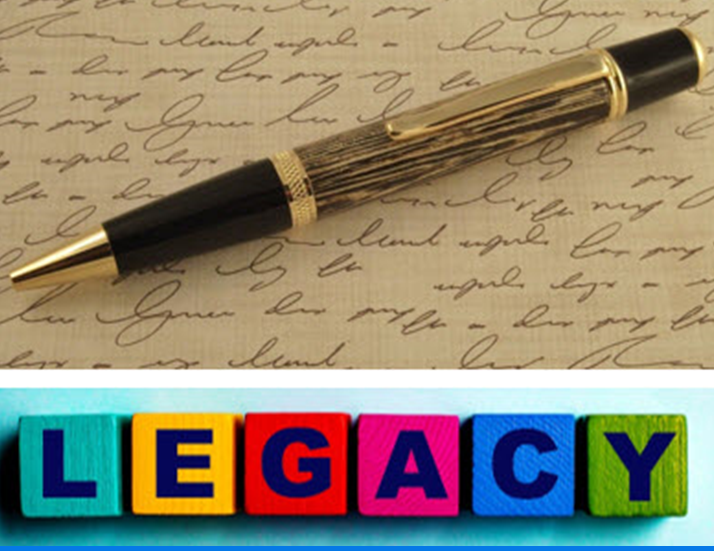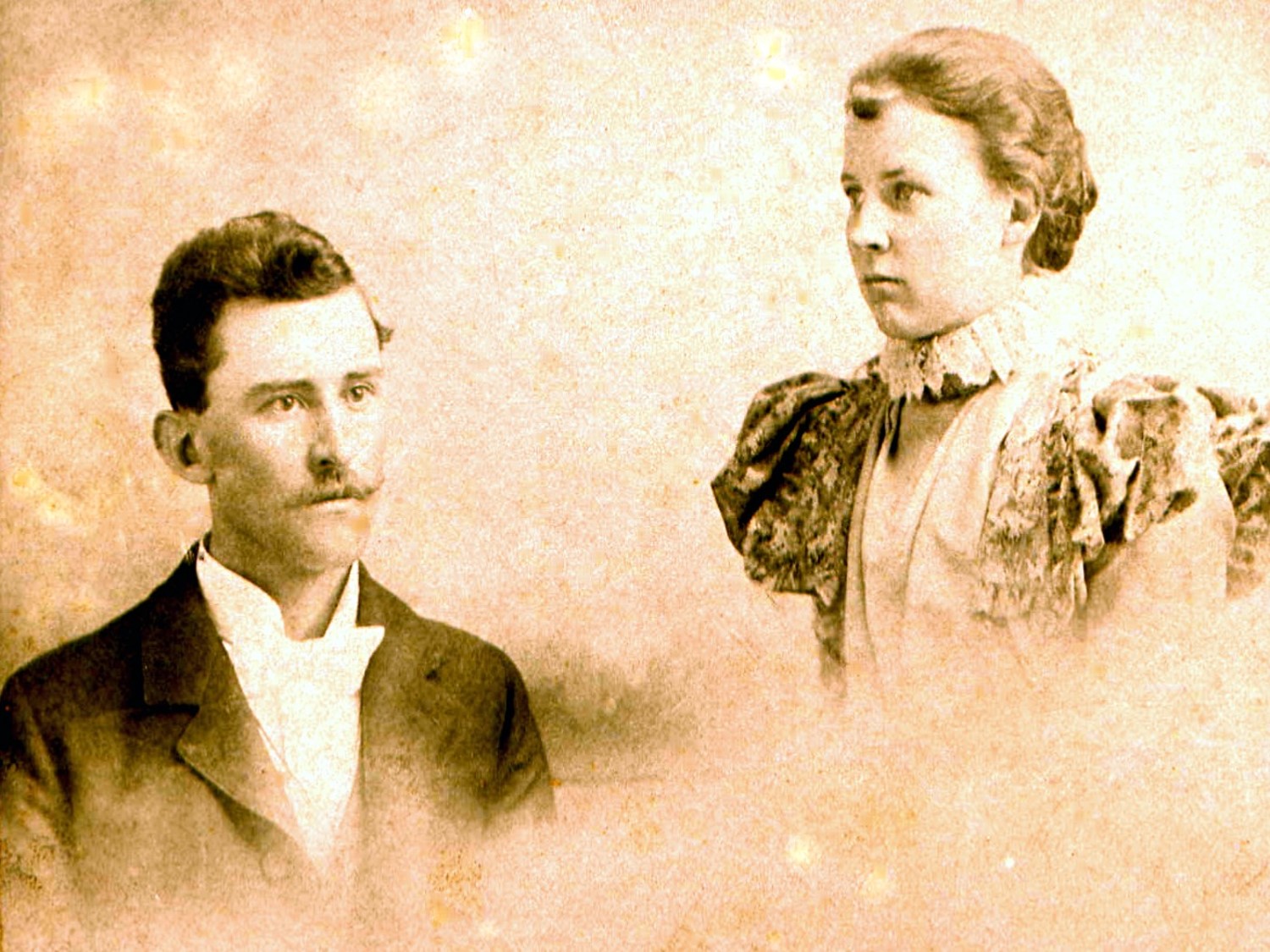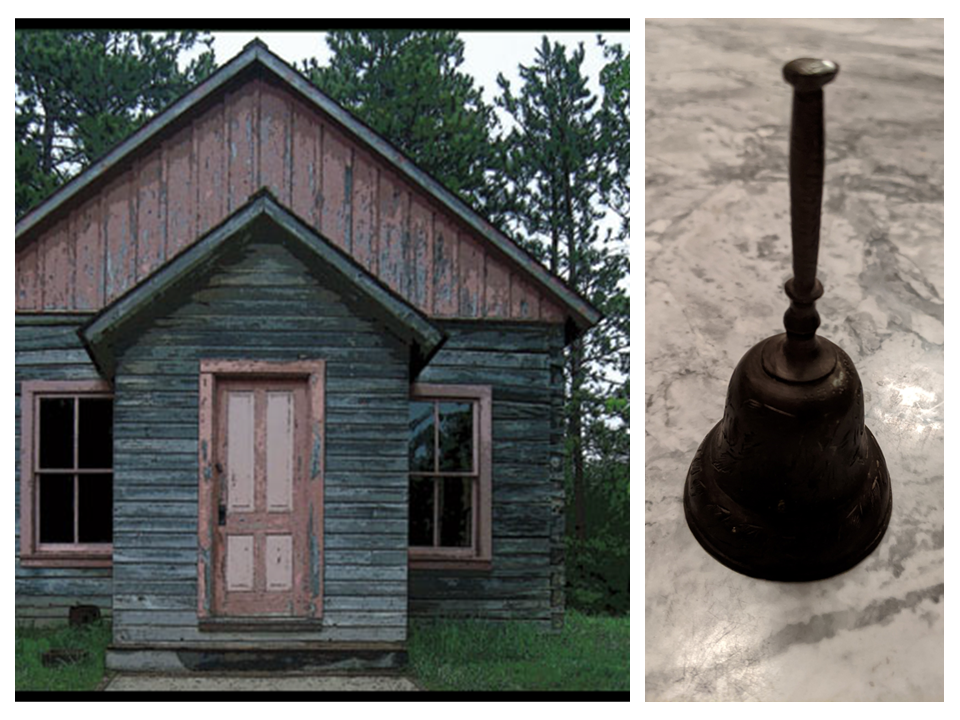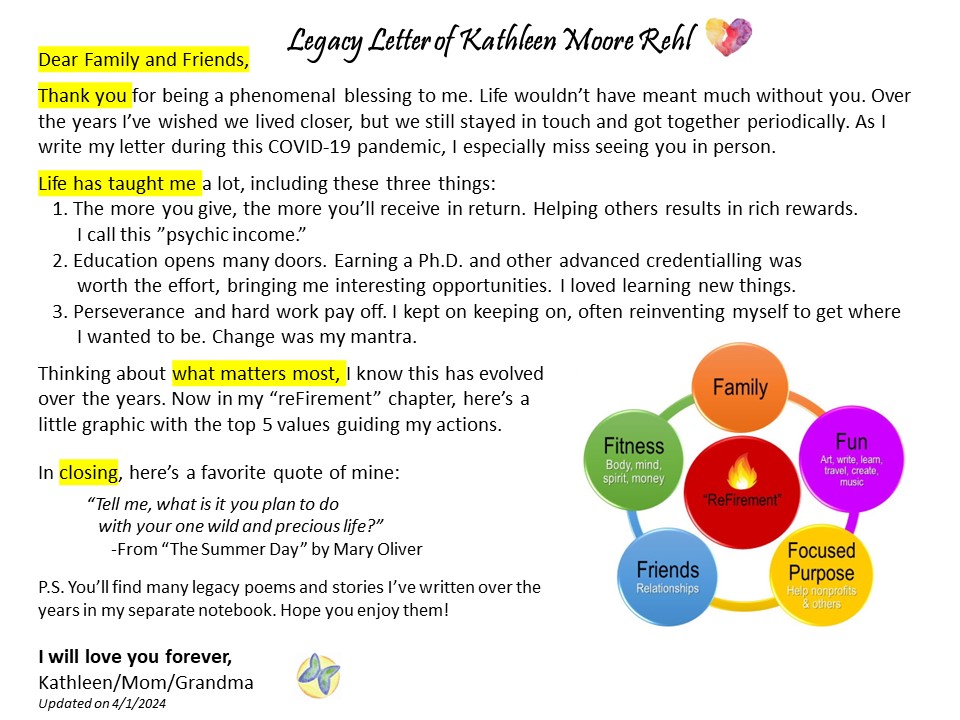

By Kathleen M. Rehl, Ph.D., CFP®., CeFT® Emeritus
What’s a Legacy Letter?
We all want to be remembered, to leave something behind at the end of our life —more than just money and “stuff.” What influence do you want to have when you’re gone?
You may have written your estate documents already, including a legal will and possibly a revocable living trust. That takes care of passing on what you own–your possessions. But material property isn’t the most valuable gift you can leave your family and other loved ones. Your true treasures are worth much more than money. In a Legacy Letter, you have the opportunity to reflect on and share your life’s lessons, values, hopes, traditions, connections, dreams, anecdotes, and more.
What you hold as especially precious can be an enduring message for generations to come.
I Wish I Knew More About Great Gram

Nettie Green, my great-grandmother, came into this world in 1877. She and “Pa” married in 1897. This picture was taken on their wedding day. It’s one of only a few photos I have of her as a young woman.
Great Gram taught eight grades in a rural Iowa one-room schoolhouse before she married. After that, she was barred from teaching, which was specified in her contract.
As a school marm, she used a little bell to summon her reading, writing, and arithmetic classes. Years later, Gram handed me her bell when I started teaching in public schools. Through the years I’ve kept it close as a reminder of her love for me.

The only mementos I have of my great-grandmother are a few pictures and that bell. Today, I would love to ask about her life from long ago, but unfortunately, she is no longer with us. Oh, how I wish my great-grandma had left us a Legacy Letter.
Mom’s Legacy Letter Was a Gift
 Two months before my mother died, she penned a Legacy Letter. She started her message by saying, “To you, my family, who are reading this letter, please know how important you are to me and how much I love you. Life has been such a fascinating and interesting adventure, with you, my family, being a big part of this journey.”
Two months before my mother died, she penned a Legacy Letter. She started her message by saying, “To you, my family, who are reading this letter, please know how important you are to me and how much I love you. Life has been such a fascinating and interesting adventure, with you, my family, being a big part of this journey.”
Her letter continued, including the statement, “Family is the most important thing. And I promise, I will help you from where I am with the family reunion planned for later this year.”
I reread Mom’s letter a couple of times annually. Do you think I’ve continued to examine her legal will many times after we completed her estate settlement? Absolutely not!
I organize family gatherings every other year, partly encouraged by my mother’s Legacy Letter. The small bequest she left me covers part of participants’ transportation costs, as my husband and I pay for our kids’ and grandchildren’s airline tickets.
When we’re together, we make s’mores one night by toasting marshmallows over our backyard fire pit. We also raise a glass of a favorite beverage in honor of Mom, whose love for family is expressed so clearly in her Legacy Letter.
A 5 Steps and 15 Minutes Method to Write a Legacy Letter
This process may help you create your Legacy Letter quickly and includes five easy sections:

Here’s an example below of a one-page Legacy Letter I wrote with this approach. Take note of how each of the five steps is highlighted in yellow:

Have Fun Writing Your Legacy Letter!
Think about one question you’d like to ask an ancestor who has passed away. Now fast forward to a time when you’re gone. What’s a question that one of your future descendants might want to ask you? What are your desires for those who receive your Legacy Letter in the future? Write on.
By the way, you may want to distribute your writing to family and friends sooner rather than later. Your choice. You don’t have to wait until after you’re gone if you prefer to share your Legacy Letter earlier.
Kathleen M. Rehl, Ph.D., CFP®, CeFT® wrote the award-winning book, Moving Forward on Your Own: A Financial Guidebook for Widows. She owned Rehl Financial Advisors for 18 years, followed by an encore career empowering widows. Now “reFired,” Rehl writes legacy stories and assists nonprofits. Her work has appeared in the New York Times, Wall Street Journal, Kiplinger’s, CNBC, and more. She’s an adjunct faculty at The American College of Financial Services. As a zesty Boomer practicing positive aging, she gratefully continues to create and contribute . . . happily using her skills and experiences to encourage others to live their best lives. Her website is www.KathleenRehl.com.